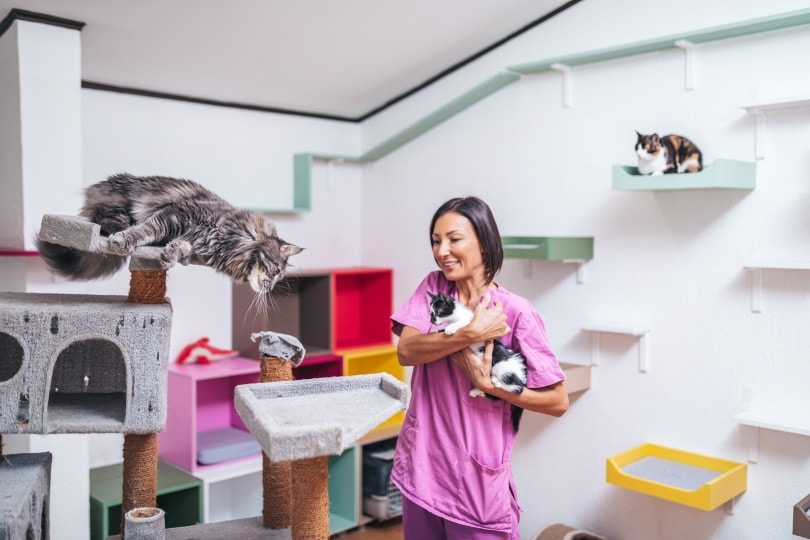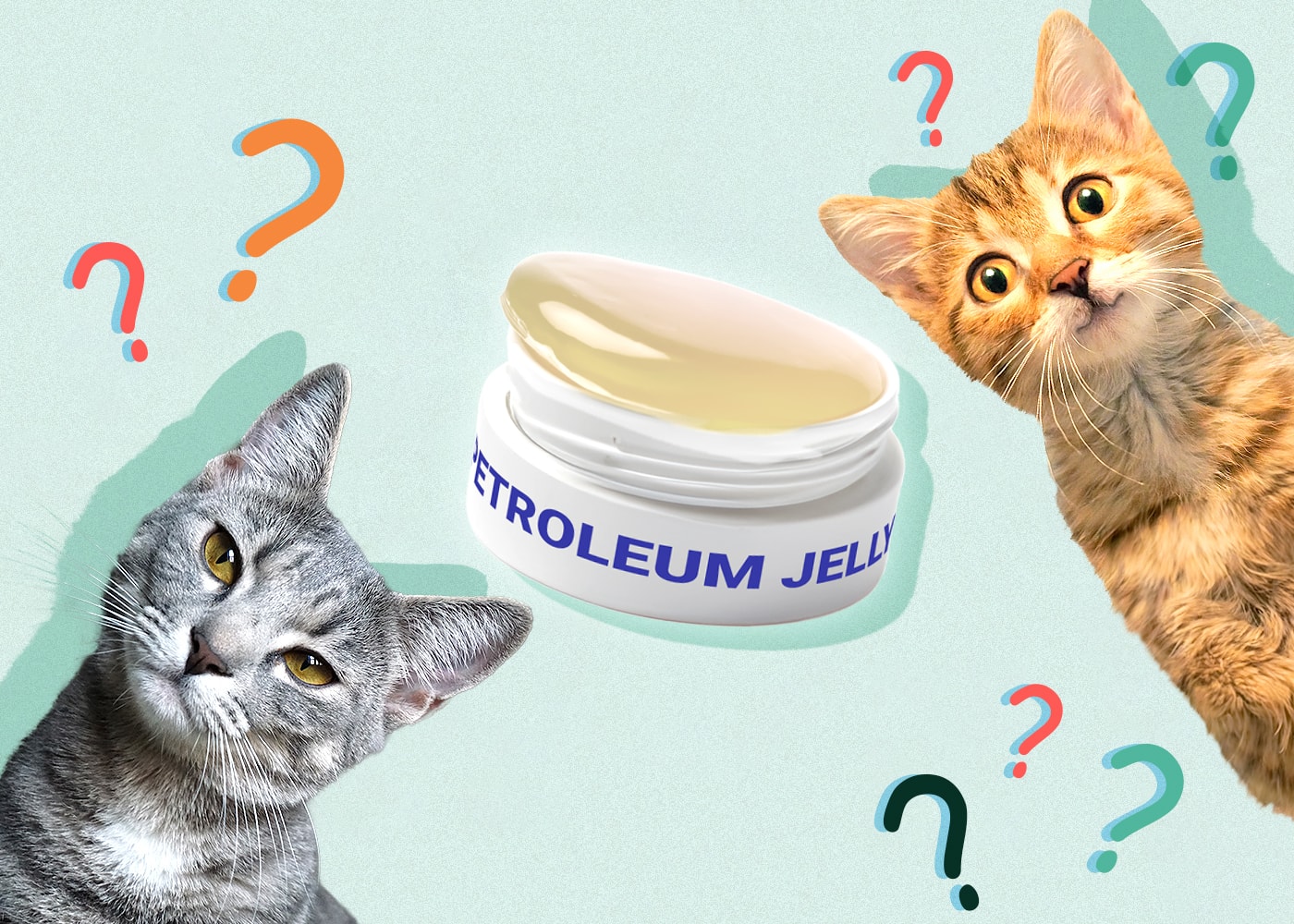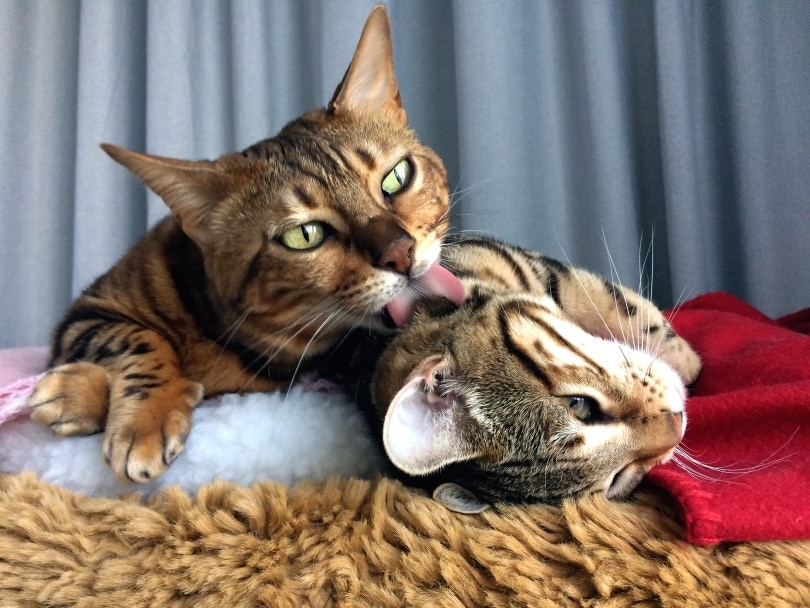Can Cats Eat Water Chestnuts? Nutrition Facts & Safety Guide
Updated on
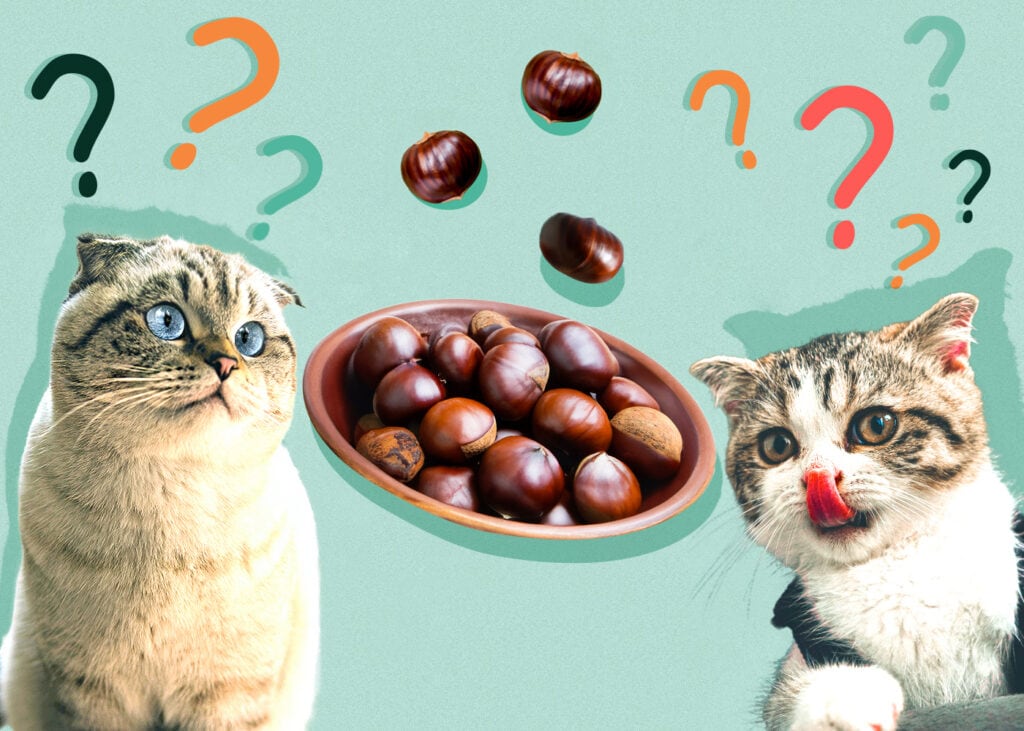
If you eat Asian food regularly, you’ve probably come across a water chestnut—the crunchy white veggie is found in many stir-fries, soups, and sides. To some cats, the crunch of a water chestnut is a tempting sensation.
If your cat likes getting into water chestnuts, don’t worry—water chestnuts are fine for cats to eat as an occasional snack, although they aren’t particularly nutritious. As long as you aren’t substituting water chestnuts for a meal, it won’t hurt your kitty.
 What Is a Water Chestnut?
What Is a Water Chestnut?
From its name, you might think that water chestnuts are a kind of nut, closely related to the chestnuts that grow on trees across the world. But water chestnuts are actually completely different. Water chestnuts are really vegetables that grow in marshy, muddy areas. The small fruits, called “corns” or simply water chestnuts, have brown skin that is about the size and color of a chestnut. That’s where the name comes from, even though once it is cut up, it’s not at all alike.
Beneath the skin, water chestnuts are white and have a crisp, crunchy texture kind of like an apple. As the name suggests, they have a very high water content—around 75%! They can be eaten raw or cooked and found fresh or canned.
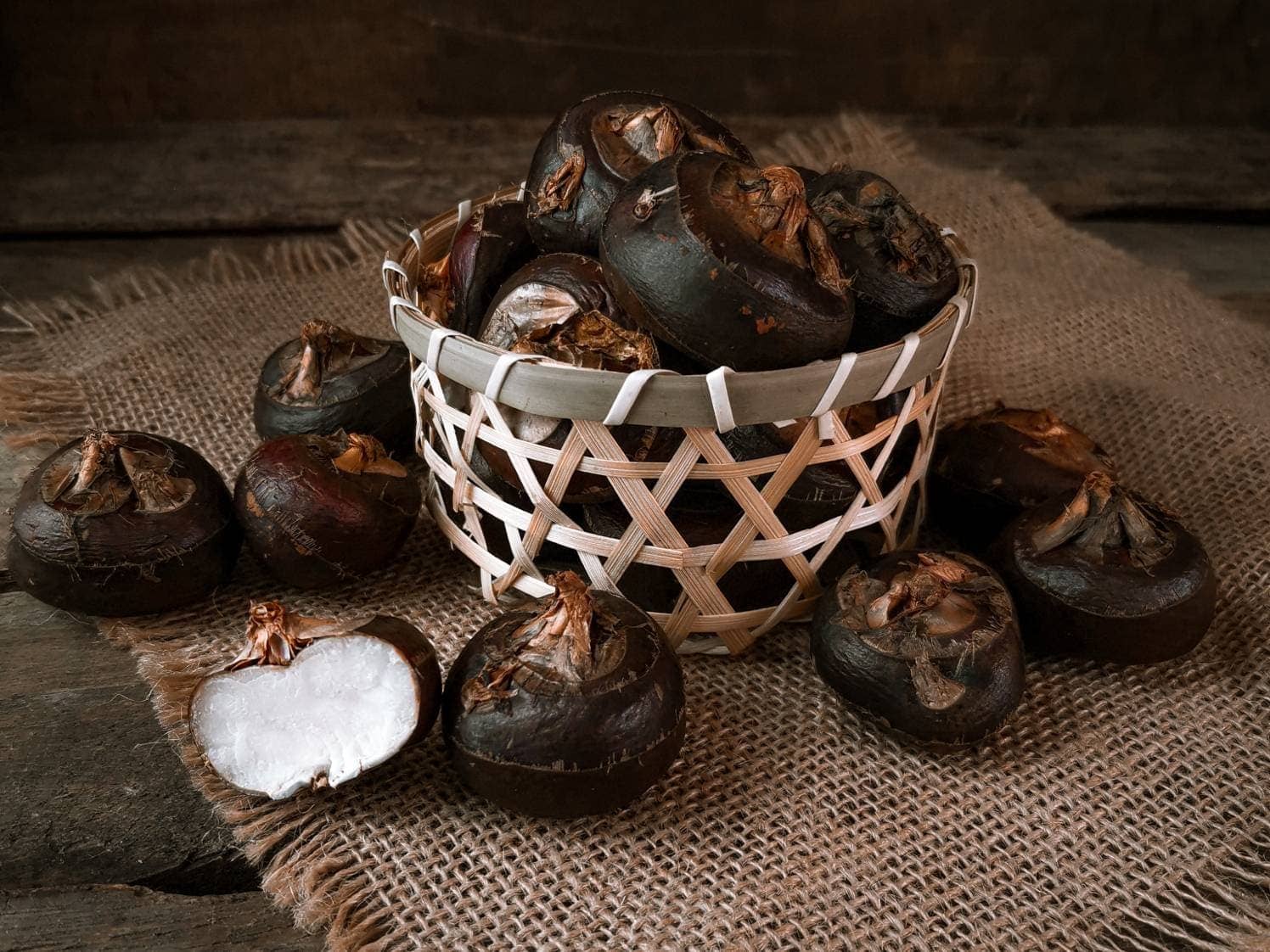
Why Cats Might Like Water Chestnuts
Cats don’t usually go after vegetables, but some might be curious about water chestnuts. Cats often like to eat the things their owners eat, and the rich, nutty smells of freshwater chestnuts might attract attention. If your cat eats a bite, he might enjoy its texture, although he won’t be equipped to enjoy its complex flavor.
Water Chestnut Nutrition
Water chestnuts are more like a “filler” food for cats without much nutritional value. Their high water content means that they will provide hydration to cats, and not much in the way of calories. After water, the next highest macronutrient in water chestnuts is carb content. Cats don’t eat many carbs in the wild, and their stomachs aren’t prepared to get much from carbs. But carb-heavy grains and vegetables aren’t directly harmful to cats either. Many dry cat foods use corn or other fillers to bulk out their kibble, and what your cat can’t break down will just pass through.
Water chestnuts do contain a few vitamins and minerals that are good for cats, although it’s unclear how well cats can absorb vitamins from plant matter. Among the vitamins found in water chestnuts are riboflavin, manganese, and copper, all of which are part of a healthy feline diet. Although your cat’s nutritional needs should be met by their cat food, a few extra vitamins won’t hurt them.
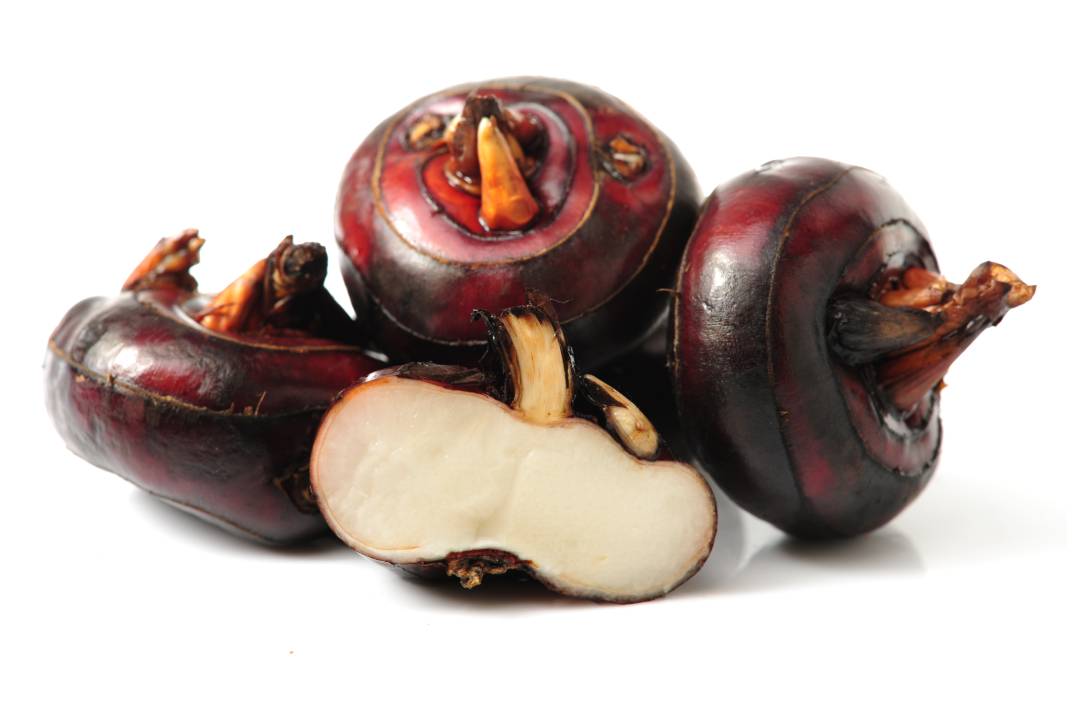
Water Chestnut Safety
If you let your cat eat water chestnuts, there are a few things to watch out for. Because water chestnuts aren’t very nutritious for cats, eating more than one or two at a time might fill your cat’s stomach without making it full. Water chestnuts shouldn’t be a replacement for real cat food.
Another worry with water chestnuts is parasites. Water chestnuts can carry a parasite called fasciolopsiasis, which affects humans and other animals. Fresh water chestnuts should always be carefully washed to make sure they are clean. (Canned water chestnuts are fine.) Although it’s unknown whether cats can contract fasciolopsiasis, it’s better to be safe than sorry.
Can Cats Eat Chestnuts?
Chestnuts aren’t related to water chestnuts at all, but they do have some similarities. Like water chestnuts, chestnuts are carb-heavy, but they have a little more fat and protein. They don’t have nearly as much water content and they are a hard nut rather than a soft veggie. They do have some vitamins and minerals that are good for cats.
Like water chestnuts, true chestnuts are safe for cats to eat, but they won’t provide much nutritional value.
Now that you know what you can safely feed your cat, it’s just as important to find a bowl that supports their health and well-being. With whisker-friendly bowls and a wide tray to catch any spills, our Hepper NomNom Cat Bowl is our favorite option.
 Other Tasty Foods for Cats
Other Tasty Foods for Cats
Cats can eat a wide variety of food, but the best foods for cats are high in protein, fairly low in fat, and low in carbs. Most meats are safe for cats to eat, although high-fat and high-sodium cuts should be avoided. Cooked eggs can be a safe treat to share with your cat as well. Lactose can cause stomach problems in cats, but low-lactose dairy products like butter and hard cheeses are fine in small doses.
Conclusion
Although a few cats are adventurous eaters, most prefer to stay pretty close to their normal diet. This means that the best treat is often just a morsel of their ordinary food. Water chestnuts are generally fine for cats and likely won’t cause them any harm, buts it’s best to stick to vet-recommended treats and food.
Featured Image Credit: GWX, Shutterstock
 What Is a Water Chestnut?
What Is a Water Chestnut?
